Seed oils causing obesity by Jeff Nobbs
Blog image created with Canva
Seed oils causing obesity
A molecule called HNE (4-Hydroxynonenal) has been recently described by researchers as playing a key role in obesity.
HNE is a breakdown product of omega-6 fats, which come primarily from seed oils in our diets.
Here's the evidence linking seed oil-derived HNE to weight gain.
In 2001, Austrian researchers treated single-cell yeasts with small amounts of HNE.
While the untreated cells didn't accumulate fat, the HNE-treated cells had significant fat accumulation within 2 hrs.
After 11 days, the HNE-treated cells had either accumulated fat or had died.
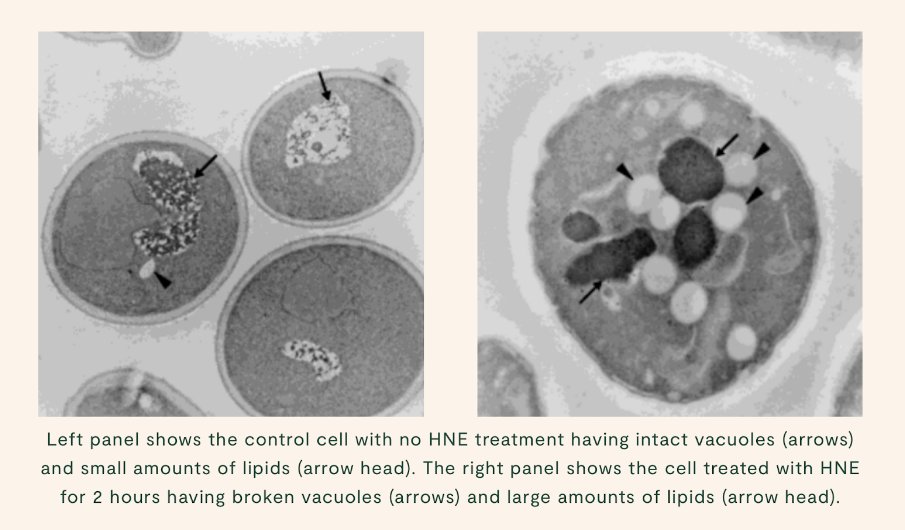

In 2008, researchers at the University of Arkansas scaled the experiment to C. elegans, a microscopic roundworm with about a thousand cells.
Similar to the single-celled yeast, the roundworms treated with HNE accumulated intracellular fat. The more HNE, the fatter the worms.
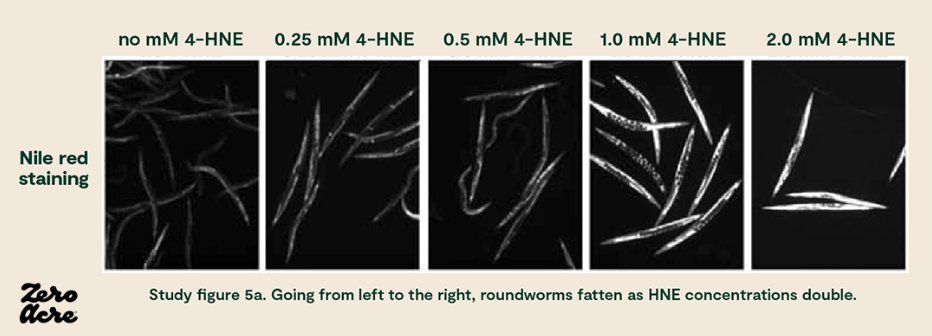

The researchers concluded that the accumulation of body fat "can be reversed not only by withdrawal of food, but also by withdrawal of HNE, even in the continuing presence of excess food."
The same study showed that a reduction of HNE led to lean worms.
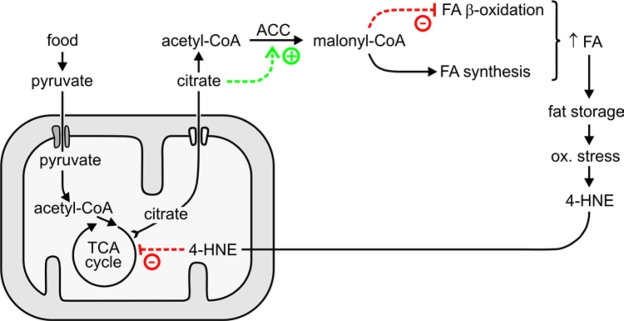

In 2020, researchers showed that mice with elevated levels of HNE gained more body weight, even if they ate the same number of calories and exhibited the same amount of movement as mice without elevated HNE levels.
"ALDH2*2" below describes the mice with elevated HNE levels:
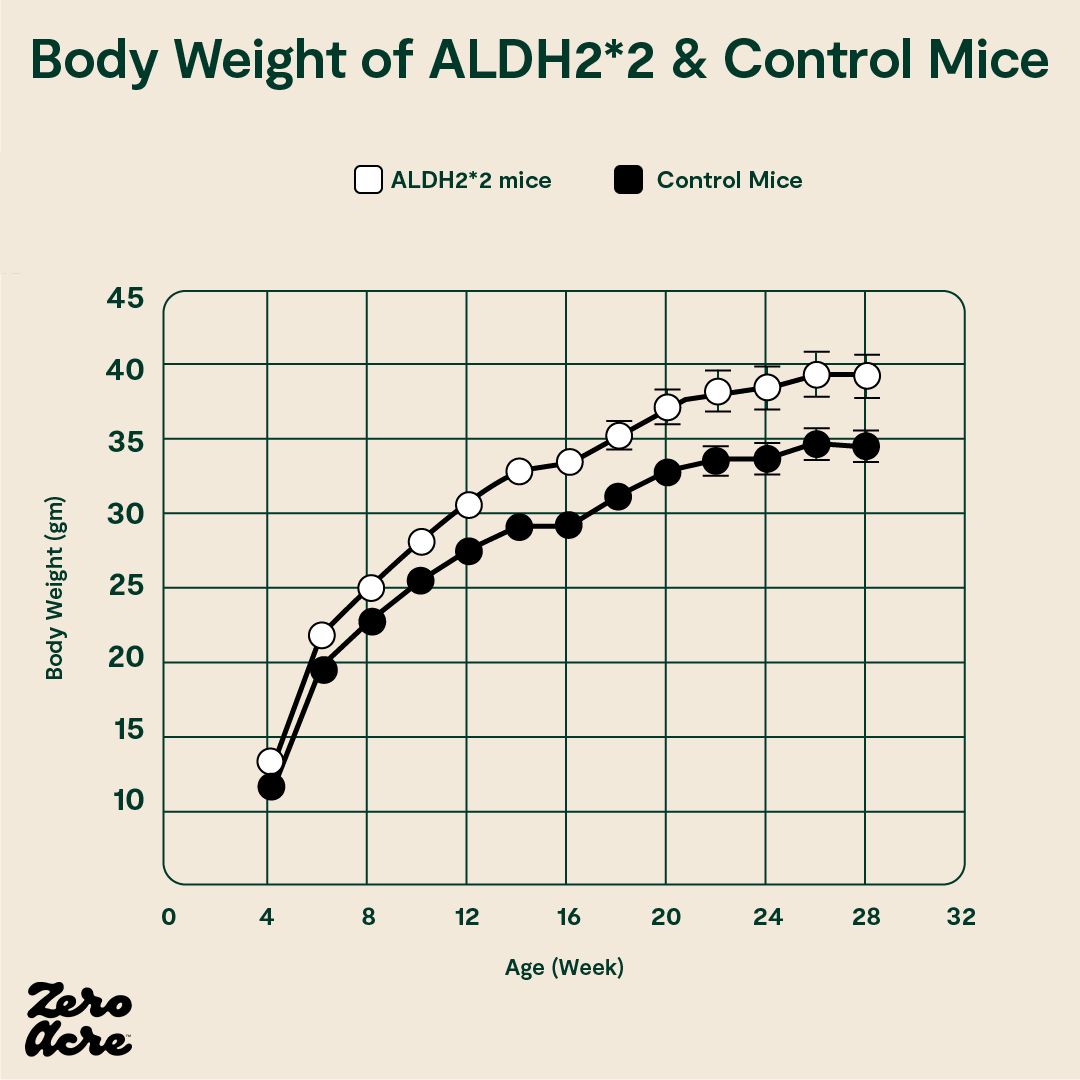

Higher levels of HNE didn't affect the amount of food the obese mice ate or how much they moved. But, it did change how many calories they were able to burn during their lives.
When the obese mice were given a detoxifier to reduce HNE levels, diet-induced obesity was reversed.
In a study comparing HNE levels in obese diabetics, non-obese diabetics, and endurance-trained athletes, the obese individuals had significantly elevated levels of HNE compared to lean individuals, and the endurance-trained athletes had the lowest levels of HNE:
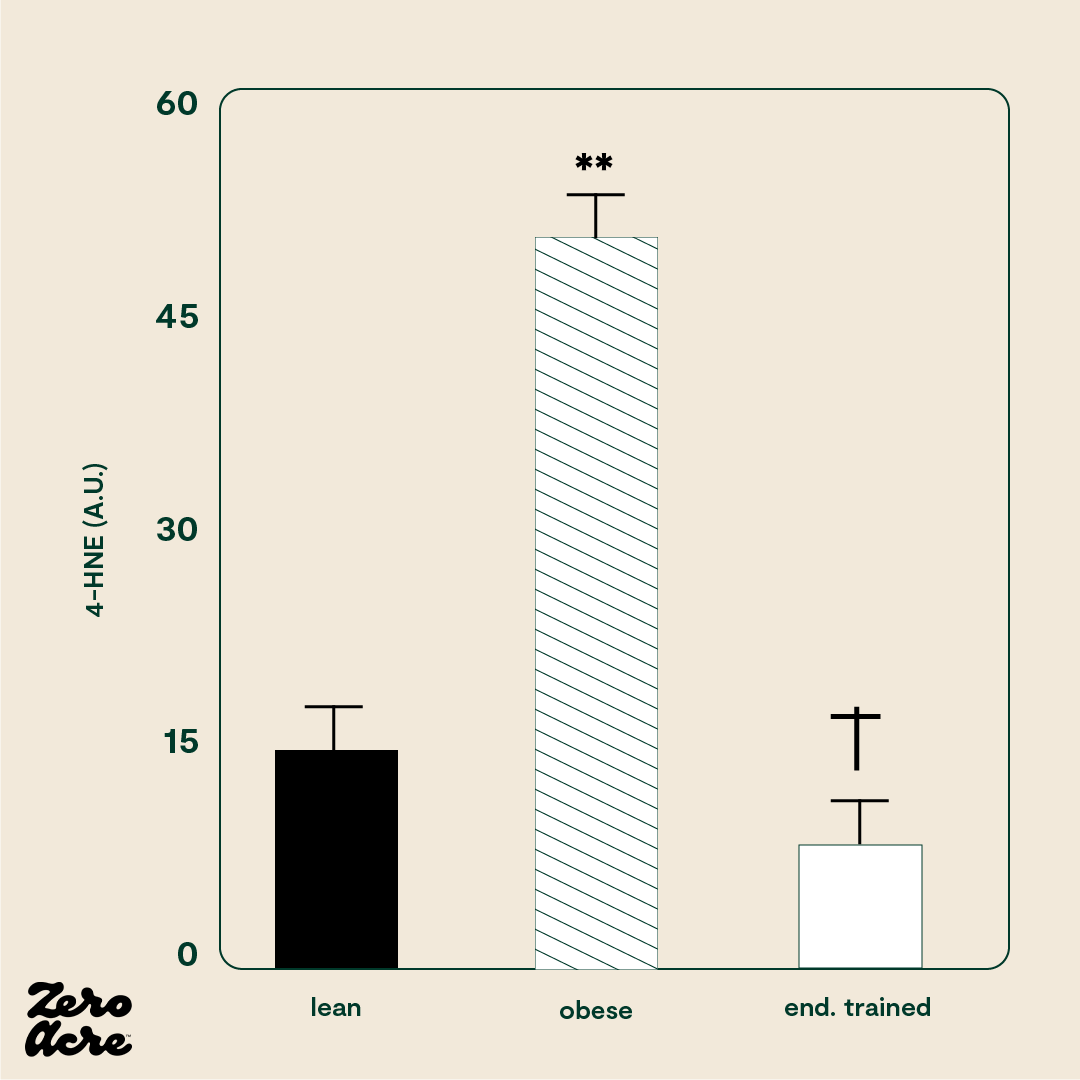

Additional research has demonstrated that exercise reduces HNE, suggesting that exercise may not cause fat loss simply because of the extra calories burned but because it also lowers HNE levels.
Separate research has shown that ketogenic diets also reduce HNE levels.
While HNE is produced in our bodies from the breakdown of omega-6 fats, it is also produced in high omega-6 cooking oils and fried foods before entering our body, as the result of high heat that accelerates the breakdown of omega-6 into HNE...
In a 2015 HNE study featured by the American Oil Chemists' Society (AOCS), University of Minnesota researchers sum up their findings, showing that french fries (FF) containing higher levels of linoleic acid (the primary omega-6 fat in our diets) also contain higher levels of HNE:
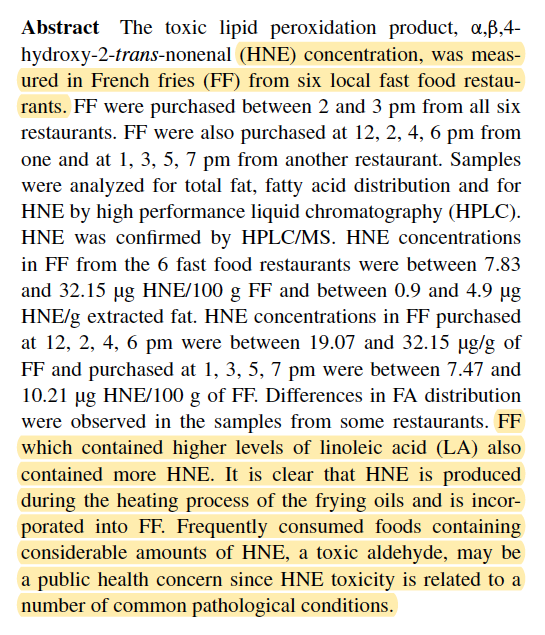

In Europe, those who eat the most fried food actually consume fewer total calories than those who consume the least fried food, but are 26% more likely to be obese...
Possibly because fried foods are cooked in repeatedly heated high omega-6 seed oils, which are highest in HNE.
In a randomized trial in rabbits, we see the effect of frying seed oils.
Compared to those eating unheated oil, the group eating single-heated oil gained 6% more weight, and the group eating repeatedly heated oil gained 45% more weight, even though they ate no more calories.
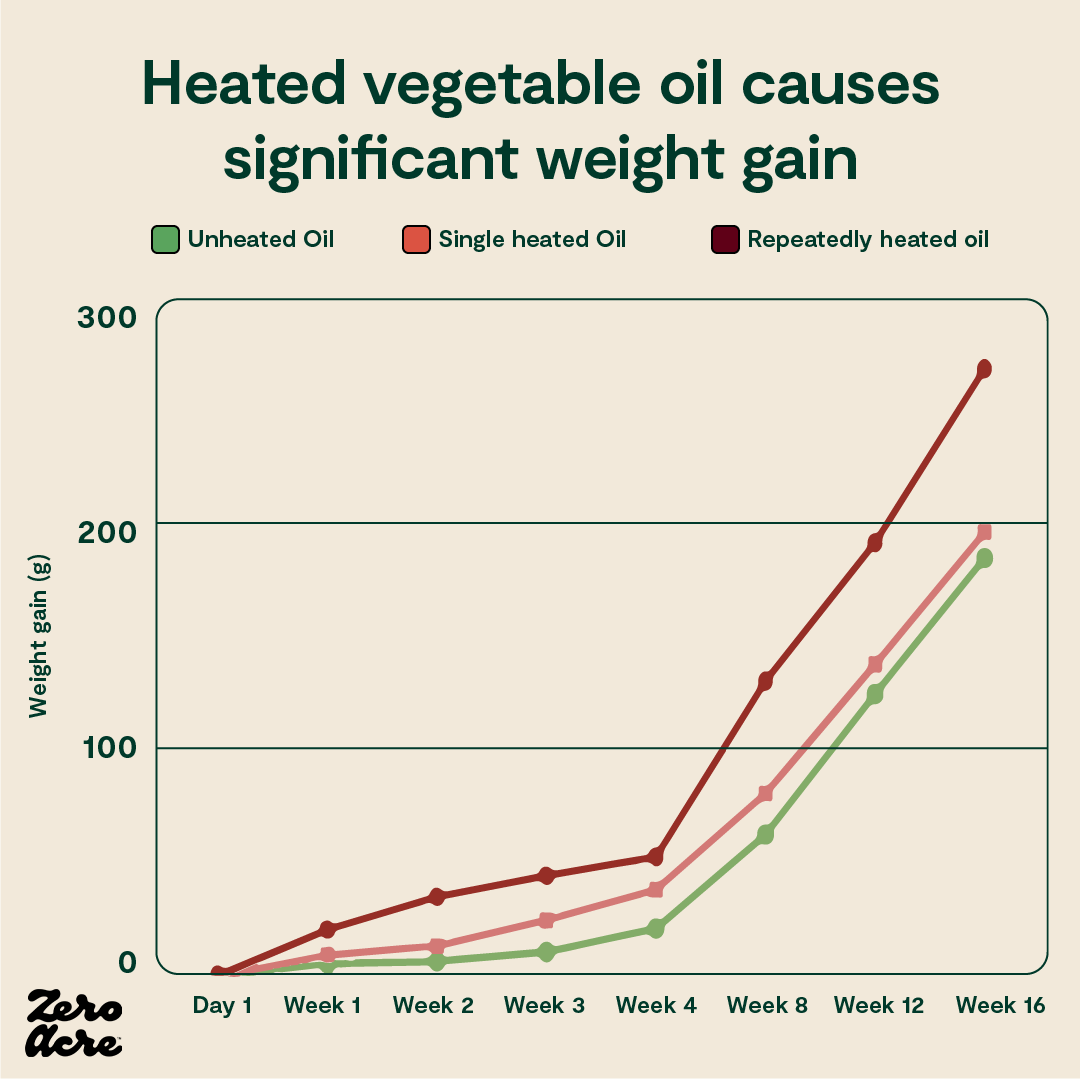

There is mostly consensus among nutrition researchers that fried foods are linked to obesity, inflammation, and disease.
However, it may not be the caloric density, saturated fat, or sodium in fried foods that make them so harmful, but rather the high content of omega-6 and HNE.
In a study on the production of HNE and other PUFA-derived aldehydes among common cooking oils, @ZeroAcreFarms comes out on top.
Cultured Oil results in the lowest levels of HNE when heated, while corn, rapeseed (canola), sunflower, and soybean oil result in the highest levels.
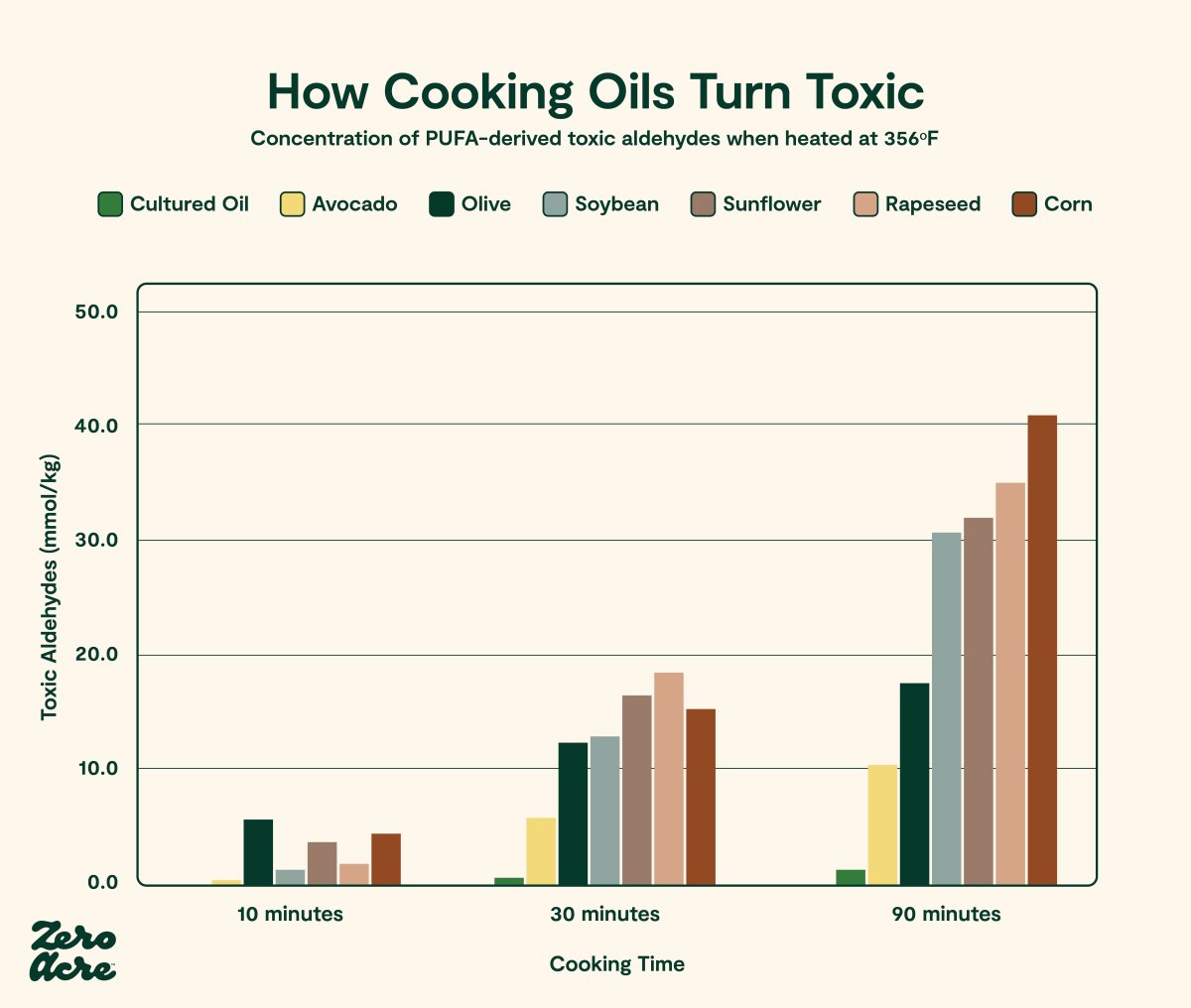

After 10 mins of cooking, Cultured Oil was the only oil studied to show no measurable generation of HNE or other PUFA-derived toxic aldehydes.
After 90 mins, Cultured Oil produced 6-11x less than avocado and olive oil and about 20x less than seed oils like soybean/sunflower oil.
The most effective way to minimize HNE in your body may be to avoid HNE in the first place by minimizing the primary source of omega-6 fat in our diets: linoleic acid found in liquid seed oils.
Here are the oils lowest and highest in omega-6 linoleic acid:
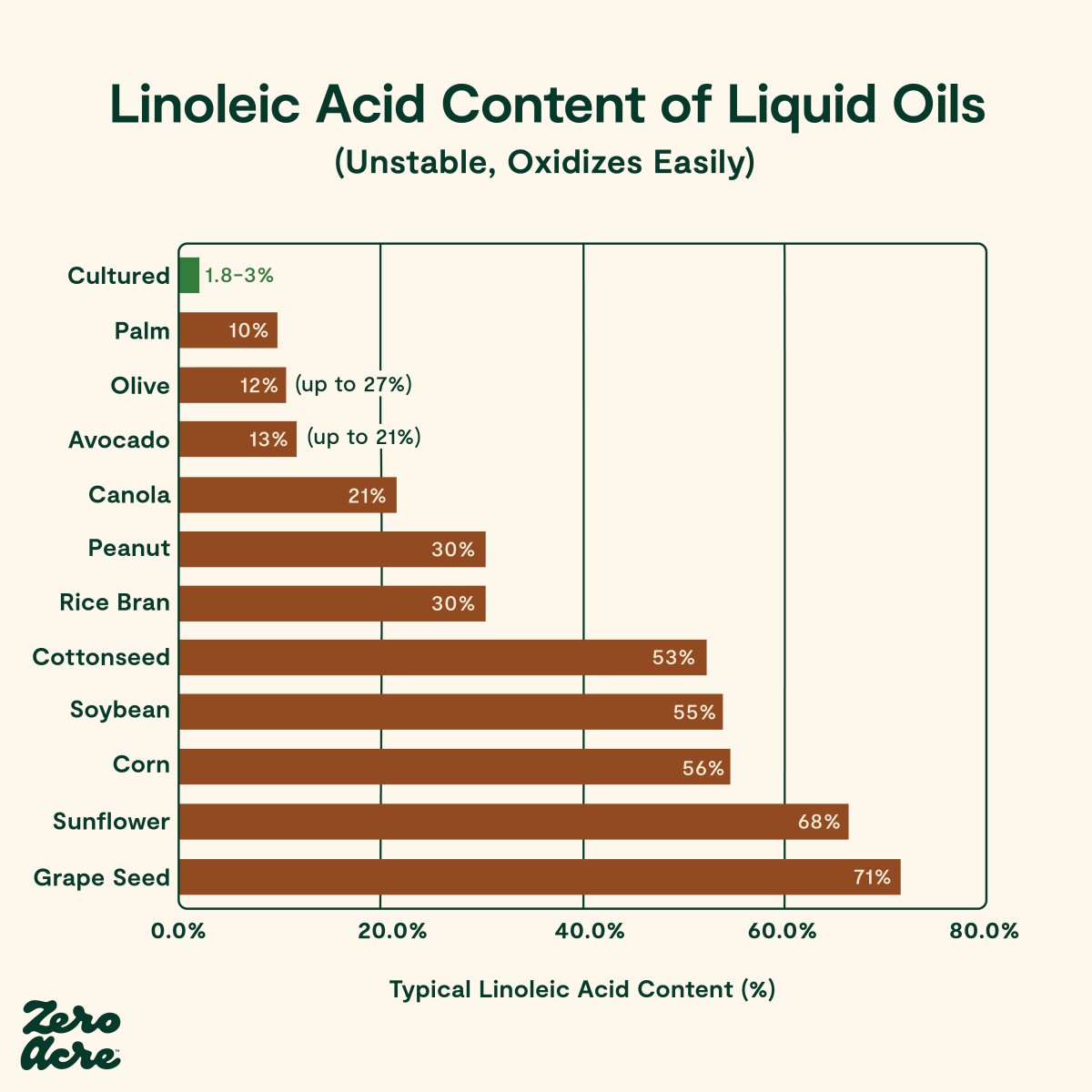

See the studies and read more about the link between seed oils, HNE, and obesity in our white paper.
And learn more the health benefits of Cultured Oil from @ZeroAcreFarms (my company), which is made by fermenting sugarcane, at https://zeroacre.com/blog/cultured-oil-health-report#h3-high-oxidative-stability
Written by Jeff Nobbs
Published February 11th, 2023
Co-founder Zero Acre Farms on a mission to get seed oils out of our food system.
Co-founder Kitava
Website: https://www.jeffnobbs.com
Twitter: @jeffnobbs
Tim Noakes, Jonno Proudfoot, Sally-Ann Creed

The Real Meal Revolution: The Radical, Sustainable Approach to Healthy Eating (Age of Legends)
Tim Noakes, Tamzyn Murphy, Neville Wellington, Hassina Kajee, Jayne Bullen, Sarah Rice, Candice Egnos

Ketogenic: The Science of Therapeutic Carbohydrate Restriction in Human Health

